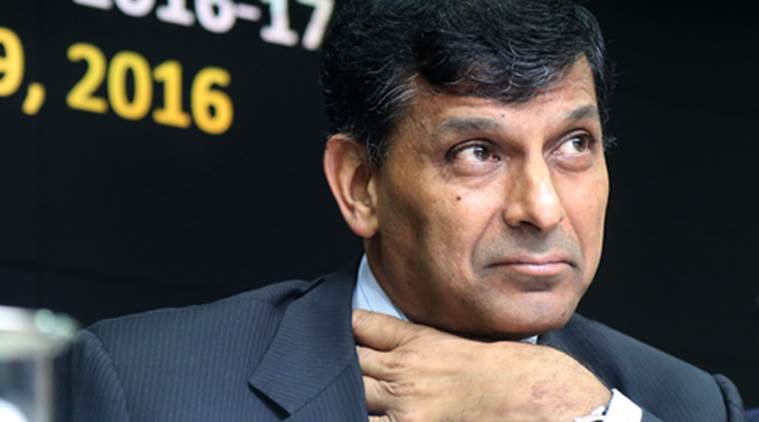 RBI Governor Raghuram Rajan. (Express Photo| Nirmal Harindrani)
RBI Governor Raghuram Rajan. (Express Photo| Nirmal Harindrani)
RBI Governor Raghuram Rajan on Saturday said that he chose the “least bad” option of raising forex through FCNR(B) scheme three years ago, but it had helped in strengthening the rupee and stabilising the currency market. When the rupee had plunged to a life-time low in 2013 and was in a free-fall due to the US ‘taper tantrums’, India had mobilised USD 26 billion through foreign currency non-resident bank account (FCNR-B) deposits by offering a special swap window for banks. The three-year deposits will mature this month.
“Policy making is about deciding in the face of uncertainty, after weighing the alternatives as best as one can. On the day I was to take over, with no good options on the table, I had to choose the least bad one. I decided to go ahead,” he said in a speech to university students. Soon after taking over as the RBI Governor on September 4, 2013, Rajan announced the FCNR(B) scheme which was considered to be his masterstroke for stabilising the rupee.

Terming it as an “iffy scheme” he said the scheme was a measured risk, with a probability that the RBI would lose money, a certainty that the bankers would make money, but also a reasonable chance that the country would be significantly better off. As regards the redemption of three year FCNR(B) deposits, Rajan said, “We are fully covered for outflows today and have made money on the deal. The rupee has been one of the most stable emerging market currencies since then.” The governor had earlier said he expects there would be outflows of USD 20 billion to repay people on maturity of FCNR-B deposits.
In hindsight it seems like FCNR(B) was the obvious thing to do because it worked, Rajan said, adding “policy making invariably involves taking measured risks in the face of uncertainty”. Macroeconomic stability, he said, is of paramount importance for India and drawing from the experience of 2013, the central bank must have the resources, knowledge and professionalism to act when the situation warrants. Recalling his early days in RBI in 2013, Rajan said India had to get back the confidence of international investors and that meant convincing them India was still an attractive placeto invest in, despite the then paralysed economic reforms.
“Furthermore, they had to believe that the rupee would retain its value going forward. So I went from room to room asking RBI staff what they were working on, and what ideas for financial sector reform they were prepared to contemplate. “We packaged our ideas into a reform programme over themedium term that could change the narrative on India, especially given the fiscal reforms the government had initiated,” he said.
Rajan said the RBI had to demonstrate to investors in short run that the country was not heading towards crisis and the easiest way to demonstrate that was to show we could raise plenty of foreign exchange.
Most Read 1Chandrayaan-3 mission: Dawn breaks on Moon, all eyes on lander, rover to wake up 2As Indo-Canadian relations sour, anxiety grips Indian students, residents who wish to settle in Canada 3Karan Johar says Sanjay Leela Bhansali did not call him after Rocky Aur Rani: ‘He’s never called me but…’ 4Gadar 2 box office collection day 40: Hit by Shah Rukh Khan’s Jawan onslaught, Sunny Deol movie ends BO run with Rs 45 lakh earning 5Shubh’s tour in India cancelled: Why is the Canada-based singer facing the music?
“I did not think much of this scheme when I first heard of it, dismissing it as a clever ploy by bankers to get a subsidy from a country in trouble. But it refused to go away, and my old colleagues at the Finance Ministry thought it was worth a try as the crisis of confidence worsened. “I too became more favourable after thinking carefully about it. First, I weighed the balance of risks… Of course, there might be cheaper ways of restoring confidence but it was not clear what they were,” he said.
Rajan said the USD 26 billion raised through FCNR(B) scheme was “more than anticipated” and helped pick up confidence. “…the rupee continued to strengthen when the money came in, partly because the global investor mood as well as Indian electoral projections also changed, and we covered our forward swaps cheaply,” he said. The FCNR(B) scheme in hindsight seemed like it was the obvious thing to do because it worked. “The reality is we will never know for certain! Perhaps it was the other elements of the package, perhaps it was everything together. Autobiographies are always written as if the author had it all mapped out with perfect foresight, ignoring the risks and uncertainties at that time. This misleads, as much as those beautiful photographs of a past holiday abstract from the heat, the mosquitoes and the lack of connectivity.
Also ReadHDFC Bank shares fall over 3% down as lender flags hit to key ratios post…RBI to banks: Give property papers back within 30 days of loan closureBanking system liquidity turns deficit for first time in FY24 due to I-CR…RBI to discontinue I-CRR in a phased manner from today
“Policy making invariably involves taking measured risks in the face of uncertainty,” Rajan said.


